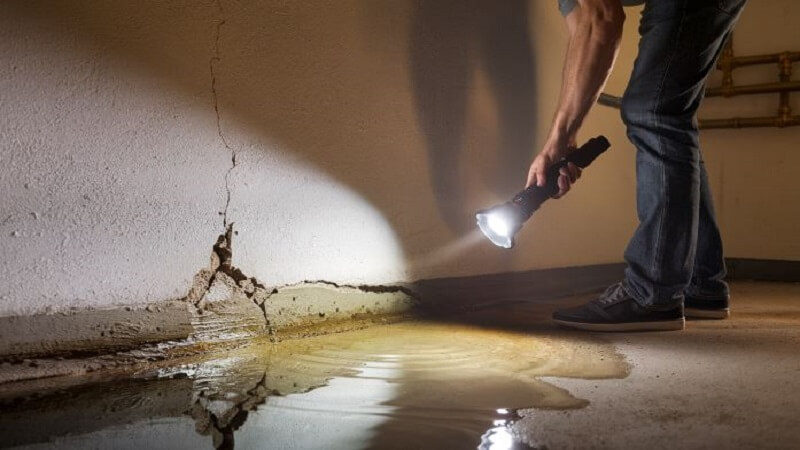Water leaks are a frequent issue in homes and, if not addressed promptly, can result in serious damage and expensive repairs. As a homeowner, it’s important to stay vigilant and spot early signs of water leaks before they become significant issues.
If you encounter a water leak, don’t hesitate to contact this company that offers leak detection in Phoenix. They have the skills and equipment to promptly and efficiently repair leaks in your plumbing system.
This blog post will go over how homeowners can easily detect water leaks in their homes and take the necessary steps to prevent further damage.
Look for visible signs
The first step in spotting water leaks is to inspect your home for any visible signs visually. Check your walls and ceiling for any discoloration or water stains, which could indicate a leaky pipe behind them. Look for peeling paint, wallpaper, or bubbling plaster, which could be signs of water damage.
Another area to check is your floors. Look for any warping or buckling on hardwood floors, which could indicate water is leaking underneath. Pay attention to the caulking around sinks and tubs in bathrooms and kitchens. If it’s cracked or missing, it could be allowing water to seep behind the walls.
Monitor your water meter
Monitoring your water meter is a simple yet effective way to detect water leaks. Begin by shutting off all water-using faucets and appliances in your home. Then, check your meter reading and wait for an hour without using any water. If the meter reading has changed, it’s a sign that you have a leak somewhere in your home.
If you suspect a leak but can’t pinpoint its location, turn off the main water supply to your house and recheck the meter. If the leak is still moving, it is likely between the meter and your home. If not, it is expected within your house.
Keep an eye on your water bill
Another way to detect water leaks is to monitor your monthly water bill. A sudden increase in your bill could indicate a hidden leak in your plumbing system.
To accurately track any changes in your water usage, keep track of how much water you use each month and compare it to your current bill. If you notice a significant increase in usage without any changes in your household, it’s time to investigate potential water leaks.
Check your toilets
Toilets are one of the most common sources of water leaks in homes. A leaking toilet can squander hundreds of gallons of water each day, leading to a hefty increase in your water bill. Add a few drops of food coloring to the tank to detect toilet leaks and allow it to sit for 10-15 minutes without flushing. If the color shows up in the bowl, it indicates a leak that needs repair.
Don’t ignore dripping faucets
A dripping faucet might appear insignificant but can also indicate a more significant issue. A single dripping faucet can waste up to 20 gallons of water daily, leading to substantial water wastage and higher bills. If you notice any faucets in your home that are constantly dripping, have them fixed as soon as possible.
Check your appliances
Water-using appliances, like dishwashers and washing machines, can also be potential sources of leaks. To prevent future leaks, regularly check the connections and hoses for signs of wear or damage and replace any old or deteriorating ones.
It’s also essential to monitor your appliances while they’re running. If you notice unusual noises or water pooling around the machine, it could be a sign of a leak that needs to be addressed.
Invest in leak detection technology
Consider investing in advanced leak detection technology to enhance your leak detection efforts. These devices are designed to detect leaks at their source and alert you immediately when an issue occurs. Some even have shut-off features that automatically shut off your main water supply if a significant leak is detected.
One popular type of leak detection technology is smart water meters, which allow you to monitor your home’s water usage in real time from your phone. Other options include moisture sensors that can detect excess moisture and alert you before damage occurs.
Don’t forget about outdoor water sources
While most homeowners focus on leaks inside their homes, checking your outdoor water sources is essential. Sprinkler systems and outdoor faucets can also develop leaks that may go unnoticed for weeks or months. Frequently check these areas for any indications of leaks, such as wet patches in your lawn or a constantly running sprinkler system.
Take action immediately
If you’ve detected a water leak in your home, the most crucial step is to take action immediately. Neglecting the problem will only result in more serious issues later on. Depending on the severity of the leak, you may need to call a professional plumber to fix the problem. Remember also to document any damage caused by the leak for insurance purposes.
Conclusion
In conclusion, early detection is key to preventing water leaks in your home. By being proactive and frequently monitoring for signs of leaks, you can save yourself from expensive repairs and possible water damage.
If you detect a leak, take action immediately and consider investing in leak detection technology for added peace of mind. With these tips, you can keep your home free from pesky water leaks. So always look for potential warning signs and address them promptly to avoid further damage.

One thought on “How to Spot Early Signs of Water Leaks”
Comments are closed.